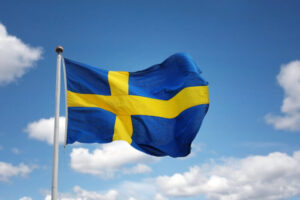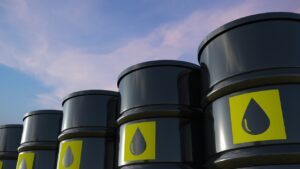Energy imports to Ukraine in 2021-2022

Source: Open4Business.com.ua and experts.news

In September, registrations of new commercial vehicles (trucks and special vehicles) in Ukraine amounted to 1012 units, which is 65% more than in September last year, Ukravtoprom reported on its Telegram channel.
Compared to August of this year, registrations increased by 6%, and the gap from the pre-war September 2021 figure is almost 29%.
Renault remains the market leader with 214 units, Scania is in second place with 106 cars, and Ford (98 units) moved up from fifth to third in August. Peugeot came in fourth with 79 vehicles registered, and Volkswagen rounded out the top five with 61 units.
In total, in January-September 2023, 8132 new vehicles were added to the Ukrainian truck and special vehicle fleet, which is 65% more than in the same period in 2022.
As reported, in the segment of large trucks, according to the information and analytical group AUTO-Consulting, in January-September this year, sales increased by 70% compared to the same period in 2022 – up to 3.5 thousand units, in particular, in September the increase was 72%. The Swedish Scania is a confident leader in the segment.
In 2022, according to Ukravtoprom, the market for new commercial vehicles decreased by 2.3 times compared to 2021, to 6.9 thousand units.

Biopharma is exploring the possibility of building a new plant by 2027, the company’s president Konstantin Efimenko said.
“We have already processed almost 300 thousand liters of plasma, the company’s turnover is slightly more than $100 million, and we need to triple the company’s turnover in four years. But it will not be possible to increase capacity further, we need to build a new plant. The new plant should be ready by 2027. To make it ready by 2027, we need to start tomorrow,” he said during the forum “Dialogues on Sustainability. How Business Develops in Times of War” forum in Kyiv on Thursday.
Efymenko also said that Biopharma plans to build a plant in Romania, but this is not a strategy to reduce dependence on Ukraine, but a way to “increase turnover.”
At the same time, Efimenko noted that attracting investments to Ukraine is currently hampered, in particular, by the issues of war risk insurance and the withdrawal of dividends.
“Biopharma is concerned about this issue, but not so much, because we are here with the foundation of the White Church, with the land. We are already here and will be here. But I am worried about other investors coming here, because the question will arise who needs our country,” he said.
As reported, Biopharma plans to triple the number of its plasma centers to 30 by 2027.

The Ministry of Economic Development and Digitalization of Moldova has announced that Ukraine will cancel the anti-dumping duty on imports of Moldovan cement by the end of 2023, InfoMarket reports.
It is noted that the Ukrainian side announced such a possibility following constructive discussions held during a meeting of the co-chairs of the Moldovan-Ukrainian intergovernmental commission on trade and economic cooperation held in Odesa, which was also attended by State Secretary of the Ministry of Economic Development and Digitalization Vadim Humene.
One of the main topics discussed at the meeting was Ukraine’s imposition of an anti-dumping duty on cement imports from Moldova, which affects the operations of cement production companies in Moldova and has negative consequences for bilateral trade between the countries.
In this regard, Vadim Ghumene insisted on a request to cancel the anti-dumping duty on imports of cement of Moldovan origin to Ukraine in the near future in order to avoid Moldova initiating trade defense processes in sectors affected by massive imports from Ukraine.
According to the Moldovan side, Ukraine has expressed its readiness to cancel the anti-dumping duty on imports of cement from Moldova by the end of 2023. In addition, the parties expressed their openness and readiness to help remove barriers to trade, in particular, to simplify border controls to optimize the flow of goods, review environmental duties and ensure transparent, uniform application of legislation by both countries.
As reported, in 2019, the Interdepartmental Commission on International Trade (hereinafter – the ICIT) applied anti-dumping duties on imports of cement to Ukraine at the level of 57.03% for cement from the Republic of Belarus; 94.46% for cement from the Republic of Moldova; 114.95% for cement from the Russian Federation. The application of such high duty rates indicated the existence of a violation of competition by these three countries and the need to protect Ukrainian producers. The measures were imposed for a period of five years and are valid until June 2024. They may be extended if the national producer initiates a review procedure, during which the Ministry of Economy and the ICIT will determine whether it is expedient or inexpedient to extend them.
In the summer of 2023, the ICIT terminated the interim review of anti-dumping measures against imports of cement produced by Rybnytsia Cement Plant originating in the Republic of Moldova, arguing that the extension of the final anti-dumping measures against imports of cement originating in Russia, Belarus and Moldova, in particular, produced by Rybnytsia Cement Plant, is necessary to level the playing field.
In the first half of 2023, Ukraine ranked second among Moldova’s main trading partners, accounting for about 14.6% of Moldova’s total trade. In January-June 2023, the trade turnover between Moldova and Ukraine amounted to approximately $929.5 million. At the same time, exports of Moldovan products to the Ukrainian market increased by 44% to $359.3 million, and imports of Ukrainian products increased by 42.6% to $570.2 million.

Sweden will provide Ukraine with a new military aid package worth 2.2 billion kronor (approximately $199 million), which will consist mainly of ammunition and spare parts for previously transferred systems, Reuters reports, citing a statement by Swedish Defense Minister Paul Johnson.
In addition, according to the minister, the Swedish government has instructed the armed forces to analyze whether Sweden will be able to transfer Jas Gripen fighters to Ukraine.
It is noted that the new aid package will be the 14th since the beginning of Russia’s full-scale invasion of Ukraine, with the total amount of aid from Sweden amounting to more than 22 billion kronor (about $2 billion).

Oil prices are recovering on Friday after updating their lows since August in the previous session.
The cost of December futures for Brent on the London ICE Futures exchange at 8:09 a.m. on Friday is $84.2 per barrel, which is $0.13 (0.15%) higher than at the close of the previous session. On Thursday, the price of these contracts fell by $1.74 (2%) to $84.07 per barrel, the lowest since August 24.
Futures for WTI for November in electronic trading on the New York Mercantile Exchange (NYMEX) have risen by $0.21 (0.26%) to $82.52 per barrel by this time. At the end of the previous session, the value of these contracts decreased by $1.91 (2.3%) to $82.31 per barrel, the lowest since August 30.
The day before, oil fell in price on the prospects of weakening global demand, which outweighed concerns about limited supply. In particular, data from the U.S. Department of Energy on Wednesday showed a significant decline in demand for gasoline. Its stocks jumped by 6.48 million barrels in the United States last week, the ministry said. At the same time, oil reserves decreased by 2.22 million barrels.
The consensus forecast of analysts polled by S&P Global Commodity Insights was for gasoline reserves to remain unchanged and for oil stocks to decline by 1.4 million barrels.